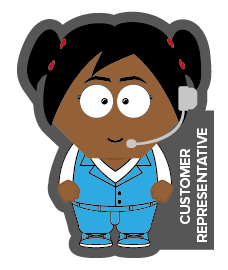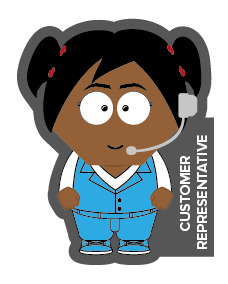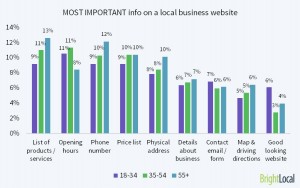What is a Customer Representative?
The Customer Representative Product Owner is the go-to person for people in the organization who want to gain a understanding of what customers (and/or users) are looking for in the product or service which the Product Owner is responsible for. Product Owners who take the stance of the Customer Representative tend to focus on helping other people (Development Team or others) to understand what customers need, what their challenges are, what pains and gains they have. When taking the Customer Representative stance, the Product Owner tends to explain how our work affects customers, users and business processes.
A customer representative is an individual who has authority to represent a community that intends to purchase a product. The term is most often applied to a representative of a company, or proxy, who works closely with a producer or developer to clarify specifications for a product or service. The term is used in software engineering; especially in development methodology Extreme Programming and Agile software development.
— Wikipedia, October 2019?—
The Customer Representative is also referred to as the Customer Advocate, Voice of the Customer, User Representative,User Advocate, Voice of the User.
The Customer Representative and Scrum
In the Agile Manifesto the word “customer” is mentioned in two of the Agile Manifesto principles and is somewhat referred to in other principles as well:
1. “Our highest priority is to satisfy the customer through early and continuous delivery of valuable software.” ? If our highest priority is to deliver value early and often, we should probably have a good understanding of what value is for our customers, so we should clearly understand and represent them well.
2. “Welcome changing requirements, even late in development. Agile processes harness change for the customer’s competitive advantage.” ? If one of our goals in Agile is to enable competitive advantage for our customers, that means that we should have a clear understanding about our customers, but also about their vision, strategy, goals, objectives and business model right?
4. “Business people and developers must work together daily throughout the project.” ? Although referred to as “business people”, what this principle means is that development teams should collaborate closely with business stakeholders, customers and users.
10. “Simplicity?—?the art of maximizing the amount of work not done?—?is essential.” ? In order to maximize the amount of work not done, and to try to keep the product as ‘simple’ as possible, or better said; stick to the core of the product and it’s customers needs; we would need to have a really clear understanding of what it is that our customers are trying to achieve, who they are, what their needs are, etc. right?
Looking at other sources, such as the book The Professional Product Owner or the contents of a Professional Scrum Product Owner training, Product Owners do have a great deal to do with understanding customer needs and representing customer and stakeholder interests. In addition to these sources, looking at some of the most successful Scrum Teams we have worked with, their Product Owners had a very good understanding of customer needs, desires, values and goals, which they shared often with the teams and stakeholders in order to increase customer focus and understanding.
From both a Product Management, Agile and a Professional Scrum perspective, we can only say that taking the Customer Representative stance regularly is key to being a successful Product Owner. The Product Owner is responsible for maximizing the value of the product after all and you maximize this value for customer and users right?
What great Customer Representatives do
With the many Product Owners and Product Managers we have trained and coached in their daily practice, we’ve observed the following patterns in the way that Product Owners act as Customer Representatives:
- Naming the customer and user; Customer Representative Product Owners are able to list and name customers and users. They have a clear understanding of the customer and user personas and know them by head. It makes sense to this Product Owner to talk about “Dave” and then know that we’re talking about the CEO, married, two kids, loves baseball and cycling. But also what his biggest challenges or worries are; the company is very successful, still growing, but what is the next big thing? How to stay relevant in the future?.
- Listening over Talking; The Customer Representative understands very well that listening to customers is much more important than talking to customers. This Product Owner has regular meetings with real customers and users, just to listen to their pains, gains, needs and wants. They’re not selling them the product, nor trying to solve their current, actual problems. These Product Owners are just there to listen, observe and maybe try to spot some hidden opportunities.
- Identifying customer and user needs; Identifying customer needs is not the same as asking the questions: “What do you want? What do you need?”. Product Owners that have mastered the stance of the Customer Representative are able to listen, observe and ask powerful questions in order to get a better customer/user understanding. Creating a great product that customers love isn’t done via asking the simple questions. It’s about really understandingcustomers and users.
Example of a great Customer Representative Product Owner:
When I was working with for an EV-charging company, a new Product Owner came into the company. After doing proper introductions with the Development Teams and going through the company bootcamp, he wanted to really understand customers and users. So, he first talked to a lot of people in the company, to get their ideas. But what was really great, was that he actually rented an Electric Vehicle for two weeks, ordered a whole bunch of charging cards from different companies, downloaded several mobile apps to support him and then he just experienced E-Mobility for two weeks himself. This is a great example of a Product Manager who tries to really understand and experience customers and stepping in their shoes.
- Understanding the why of the customer?—?Although the previous points may have made this one clear enough already, one can never mention too often that we should not so much talk about what but mostly about why. And this is what Customer Representatives do. They focus on the goals and objectives of customers. They focus on the pains and gains. They focus on what people want to achieve, instead of what people want to do.
- Identifying customer value?—?Another core element to being a Customer Representative, is to clearly understand and be able to express what customers value and how to qualify and quantify value. An example of how value can be expressed, is via the B2B or B2C value pyramids.
The Product Owner as a Customer Representative
Obviously, not al (Product Owner) Customer Representatives are the same. That being said, some positive outcomes and benefits that we observe when Product Owners takethe Customer Representative stance more often is:
- The Development Team(s) have a greater understanding of the actual, and real customers and users. With this increased understanding of users and customers, including their pains and gains and what they’re trying to achieve, the Development Teams are able to build a better product or service, that better fits the customer needs. Bottomline, if you understand customers better, your chances of ‘building the right thing’ are much bigger.
- Besides building a better product, the Development Teams are becoming more and more self-organizing, because they can really relate to and empathize with customers and users. This increased self-organization allows the Product Owner to spend more time on other stuff, instead on having to explain all the details to the teams.
- An increased focus on long term vision, goals and objectives starts to grow (while, of course, delivering in a steady and frequent cadence). This will eventually start happening, because we’re shifting our focus from the fire of the day and the stakeholder who shouts loudest this week to delivering what actually matters to customers and users;
- And although there may be other benefits as well, focusing more on the customer will hopefully lead to an increased Customer Satisfaction and a better Net Promoter Score.
Business & Finance Articles on Business 2 Community
(27)





